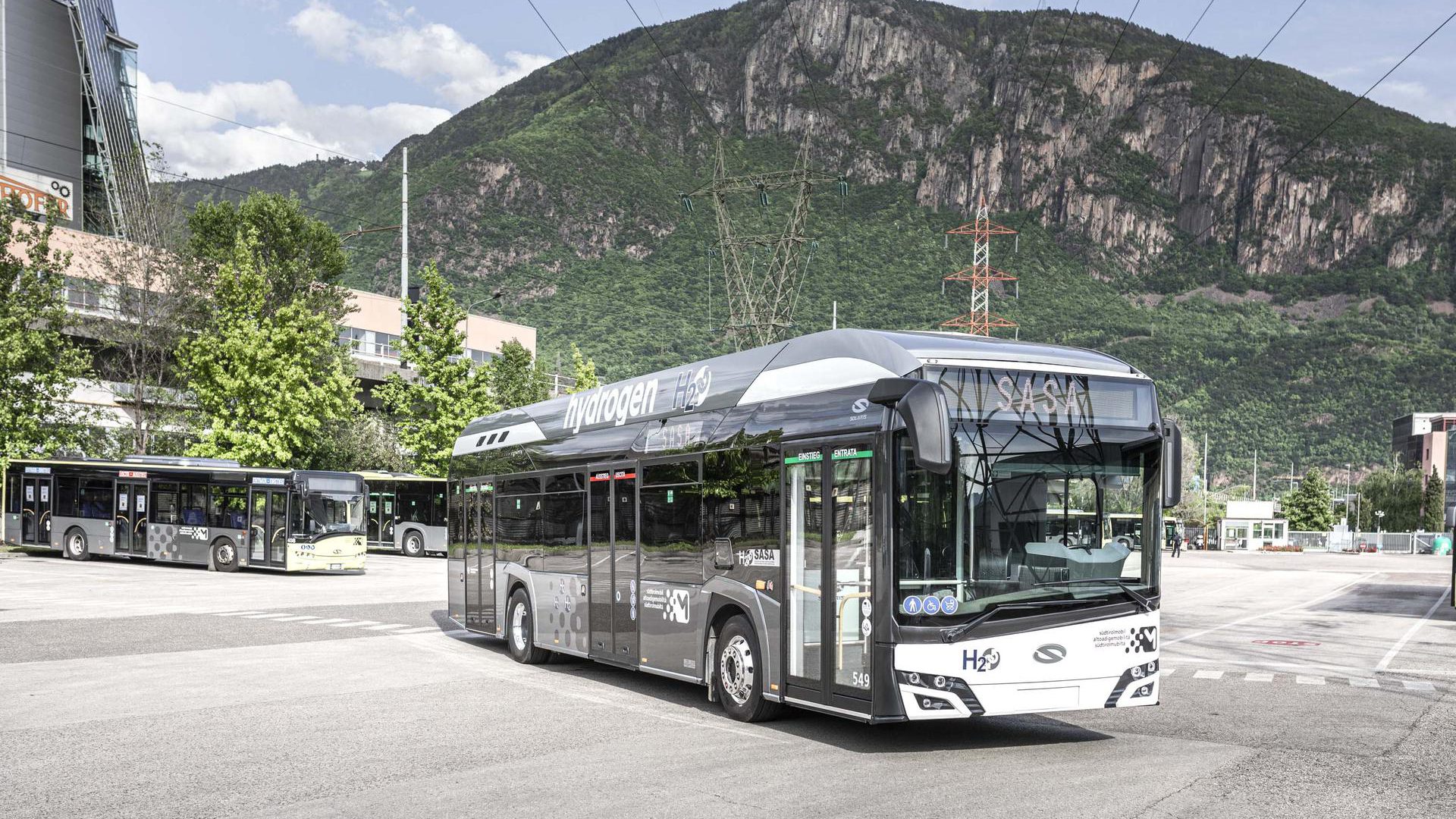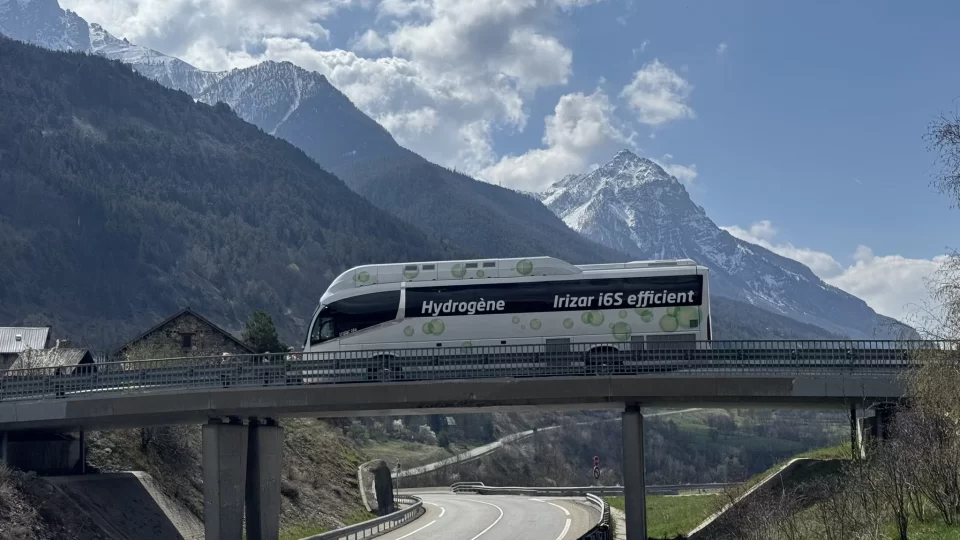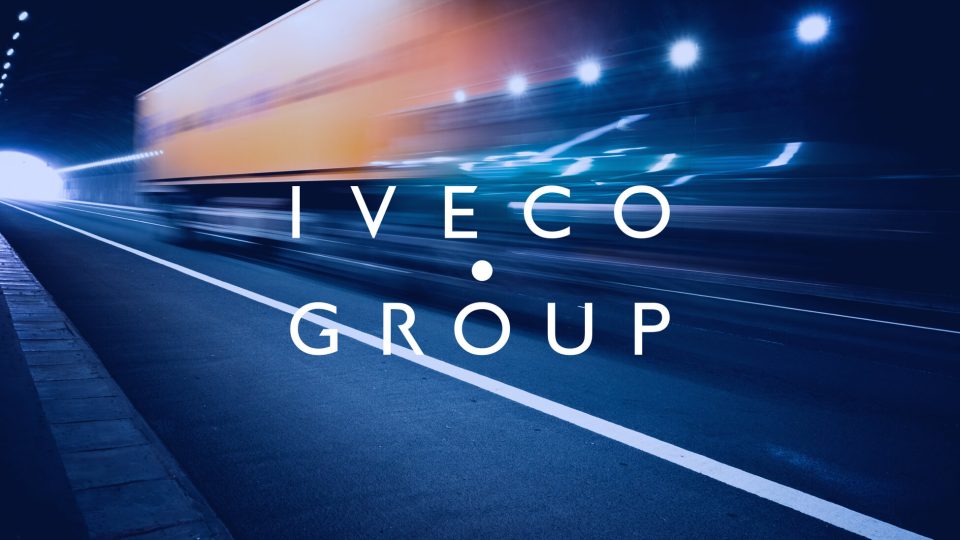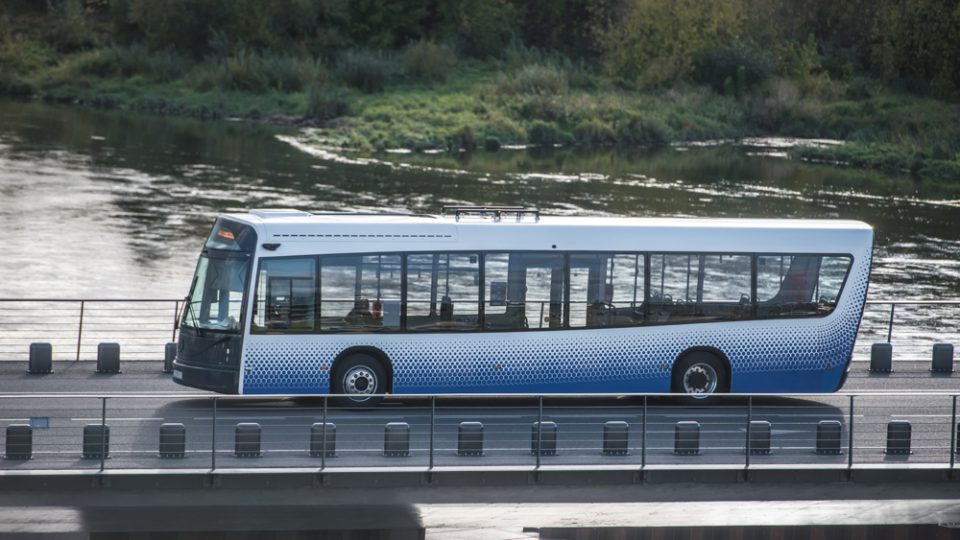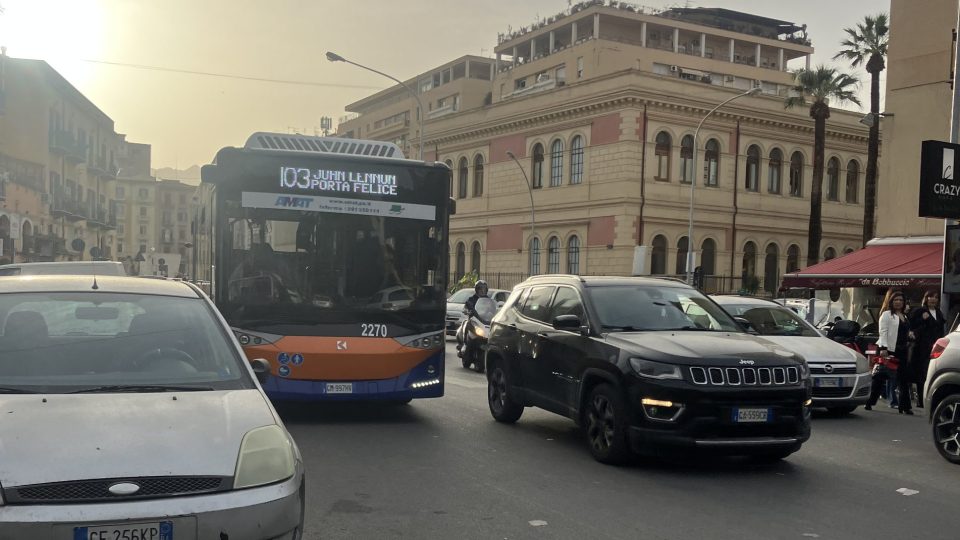SASA Bolzano launches 12 Solaris hydrogen buses, to be powered with filling station within the depot
SASA Bolzano has inaugurated its batch of 12 new Solaris Urbino hydrogen, that will be powered thanks to a hydrogen filling station installed within the public transport company’s depot. Thanks to this latest supply, the Italian city features today one of the largest fuel cell bus fleets in Europe, and the first at all in […]
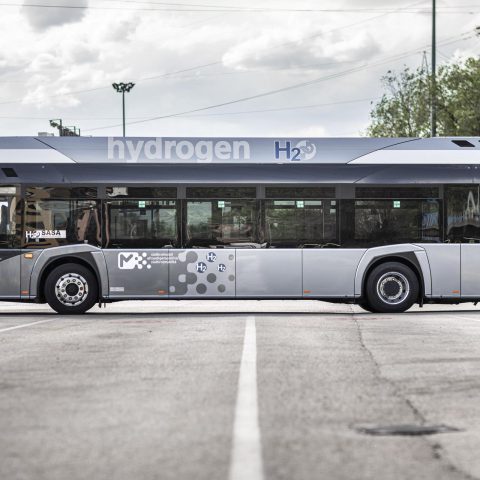
SASA Bolzano has inaugurated its batch of 12 new Solaris Urbino hydrogen, that will be powered thanks to a hydrogen filling station installed within the public transport company’s depot. Thanks to this latest supply, the Italian city features today one of the largest fuel cell bus fleets in Europe, and the first at all in Italy. SASA has been operating Mercedes-made hydrogen buses since eight years already, as the company took part to the EU-backed project CHIC.
The Autonomous Province of Bolzano, which together with the EU has contributed 10.2 million euros to the financing of the new buses, is thus continuing to invest in the decarbonization of transportation. The Province of Bolzano has also decided to co-finance, as part of the MEHRLIN project, the construction of a hydrogen filling station directly at the SASA bus depot in Bolzano.
The commissioning of the new hydrogen buses is an important step in the implementation of our long-term strategy, that focuses on the conversion of a large part of SASA bus fleet to sustainable vehicles, i.e. battery and hydrogen buses, by 2030. To date, these vehicles are mainly in service in urban areas. However the use of zero-emission vehicles outside the city is already under investigation
Petra Piffer, director of SASA Bolzano
Bolzano bets again on hydrogen buses
The new hydrogen buses were purchased as part of the EU JIVE project, funded by the Fuel Cells and Hydrogen Joint Undertaking.
The delivery of the 12 vehicles follow the very first order ever secured by Solaris for its fuel cell bus, signed in June 2019.
“The decision of the Autonomous Province of Bolzano to invest resources in the purchase of new hydrogen buses is in line with the strategic vision of the Ministry of Sustainable Infrastructure and Mobility,” said Minister Enrico Giovannini. “The ecological transition is one of the missions of the National Recovery and Resilience Plan. In this context, an investment of over €3 billion is planned for the renewal of the public transport bus fleet, with the purchase of electric and hydrogen-powered vehicles for urban areas”.
Zero emission mobility with the Solaris Urbino hydrogen
The Solaris Urbino 12 hydrogen electric vehicle is an ultra-modern zero-emission bus that combines a high-performance small battery with a fuel cell, the latter of which powers the battery.
The vehicle is equipped with a rear electric drive axle provided by ZF, with two in-wheel motors with a maximum power of 110 kW each. The fuel cell is powered by lithium-ion technology, with a nominal energy of 29.2 kWh. The capacity of the hydrogen tank is 37 kilograms. The bus has a range of around 350 kilometres, manufacturer says.
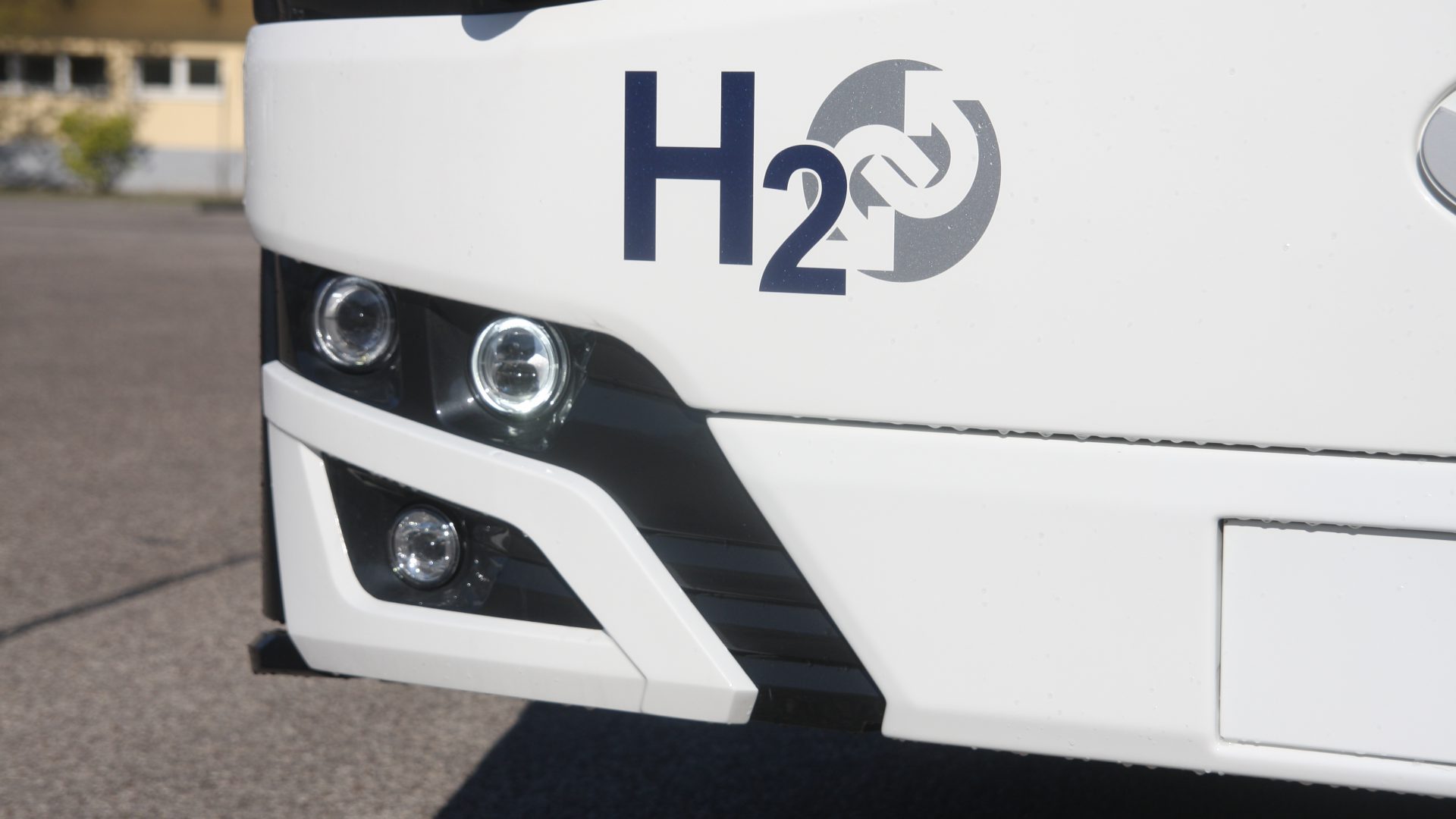
“The commissioning of the new hydrogen buses is an important step in the implementation of our long-term strategy. Our strategy focuses on the conversion of a large part of SASA bus fleet to sustainable vehicles, i.e. battery and hydrogen buses, by 2030. Moreover, these technologies are particularly suitable for use in an urban context, as they not only reduce air emissions, but also significantly reduce noise emissions. To date, these vehicles are mainly in service in urban areas. However,” explains Petra Piffer, director of SASA Bolzano, “the use of zero-emission vehicles outside the city is already under investigation”.
“The Solaris Urbino 12 hydrogen is extremely passenger-friendly, driver-friendly and traffic participant-friendly. The zero-emission vehicles represent the technology of the future – which ensures higher life quality in the city and improved comfort of public transport. While other European cities are only beginning to debate the prospective purchases of hydrogen buses, SASA Bolzano is already marching into the future, by adding hydrogen vehicles to its electric bus fleet. Owing to that step, passengers can now benefit from the latest solutions in public transport and the automotive industry,” declared Alberto Fiore, Managing Director of Solaris Italia, during the conference.
Brenner Green Corridor in view
“Only an efficient public transport system can be a valid alternative to individual transport,” emphasises the Vice-President and Councillor for Infrastructure and Mobility of the Province of Bolzano, Daniel Alfreider, “and this should also be as sustainable as possible, now that technological innovations allow it. South Tyrol has repeatedly been involved in successful European projects and is part of an active European network working towards a more sustainable and liveable future. We are placing great emphasis on the production of green hydrogen, especially for zero-emission mobility in public transport, but also for freight transport. The goal,” he continues, “is to create a Brenner Green Corridor that connects southern and northern Europe in a sustainable way and based on three fundamental pillars: transfer to rail, digitalisation and low-emission vehicles”.
